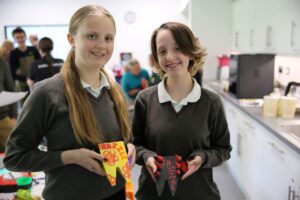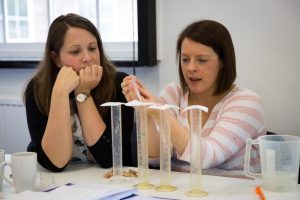Science Of Cycling
Thursday 25th June 2015
A little learning in Oxford
Still learning. That’s my lesson from the Cycling Science tour in Oxford on the longest day of the year. Even though I’d led it a few times before in other cities and thought I knew it all, I came away knowing even more.
It may have been the lovely bunch of riders who came along – all ages, all genders, all kinds of bikes. It may have been the lovely route plotted by Science Oxford. It may have been the lovely weather.
Whatever the trigger, there was a moment on the tour when I gained a little bit more understanding about how best to demonstrate some of the science that makes cycling magic. So it’s not just the lovely riders who discover stuff, en route, from the demonstrations and experiments.
Of course, having written a book about Cycling Science, I’d cockily thought there was nothing else to learn.
To write it, I’d read hundreds of thousands of words from hundreds of papers and synthesised them into 192 lovingly illustrated pages.
Yet, to really understand bicycles and the science that makes cycling work, you’ve got to get hands-on, feet on and, yes, bum on, too.

So it was that, during one of the demonstrations, I had a small epiphany.
All the demos and experiments had pretty much worked at each stop on our way to Aston’s Eyot. Then, nervously, I tried to show how the lowest spoke in a wheel gets slacker and carries less load than the other spokes.
I was worried because it hadn’t worked very well on some of the other tours I’d led.
But, in that verdant glade not far from the city centre, on a blazing afternoon on the longest day of the year, it worked perfectly. I became midsummer merry.
The lesson for me was when I realised why it had worked. Unwittingly, I’d used a wheel with spokes laced radially. Prevously I’d always used the more common type, with tangential spokes.
The difference it made to the lovely bunch of riders may have been small. The difference it made to me was enormous. A key point about wire-tensioned wheels had been made clearly and I had learned something new – to always use a radial wheel for that particular demonstration.
To describe the demonstration in detail here would be to spoil the surprise for future Cycling Science tourers. And really, it is an adventure that has to be hands-on, feet on, and, yes, bum on, too.
Naturally I’ll be very happy to bring the new improved resoundingly fantastic demonstration with the radial wheel and the entire tour to everyone who wants it. Drop me a line to book your tour.
And, when that happens, which I hope will be soon, I look forward to learning yet more from the whole experience.
Make sure you check out Max’s blog for more science of cycling stories.
Follow Max on twitter @cyclingscience1





